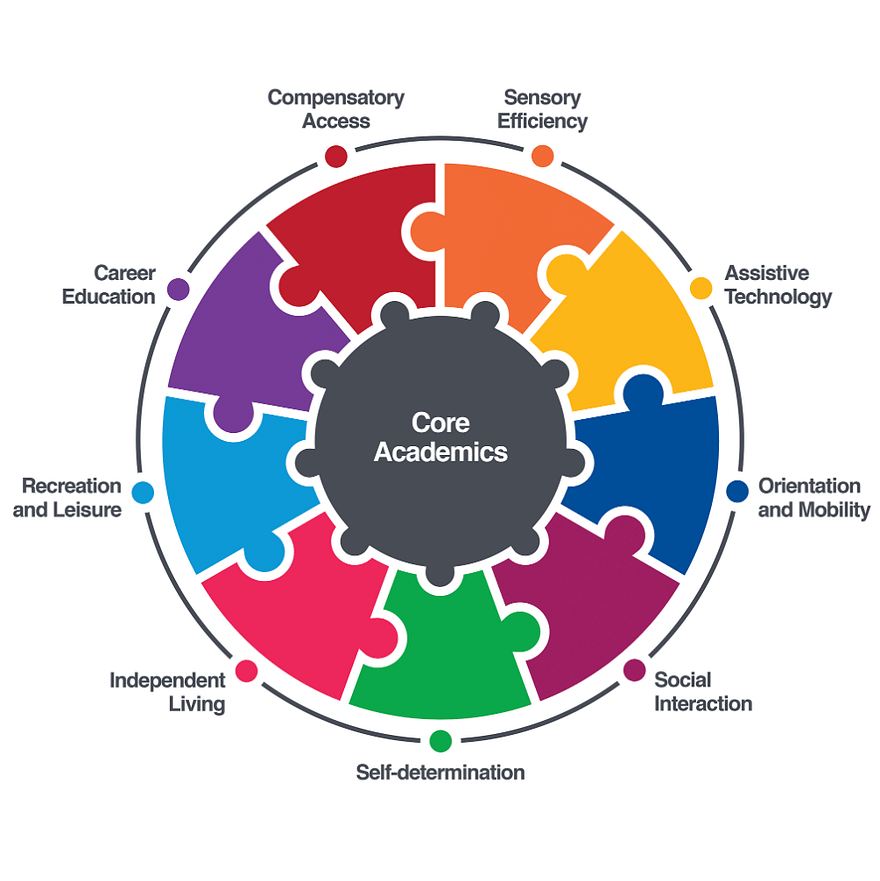The phrase Expanded Core Curriculum might sound like a huge and complicated undertaking. One may wonder why only visually impaired students must be burdened to master a whole other curriculum on top of the one their classmates have to learn. Thankfully this term is simply used by educators to refer to the set of skills that sighted children pick up automatically and unconsciously through everyday incidental learning experiences as they observe their world. Vision is a tremendous asset for attaining information about one’s surroundings from a distance. Children developing without it must obtain the same information at a much closer range using other senses. Those with some, but still substantially less vision than typically sighted children also gain significantly fewer environmental cues through mere observation. Often, directly facilitated learning experiences are necessary for adequate exposure that allows for concept understanding sufficient for long-lasting learning to form.
This specialized curriculum has been organized into nine broad categories that, when mastered, enable visually impaired individuals to operate effectively within society. The nine areas of the Expanded Cored Curriculum are as follows: assistive technology, career education, compensatory skills (those that allow access to the academic curriculum such as Braille literacy), independent living skills, orientation and mobility (travel skills such as using a long white cane), recreation and leisure, self-determination (independently advocating for one’s own needs), sensory efficiency, and social interaction skills. Every one of these skill areas are all extremely important for learning to function as a competent adult but generally do not need to be explicitly taught to fully sighted students who can acquire them through watching others interact in and with the environments around them. Adoption of the expanded core curriculum was truly a revolutionary improvement to the policies that govern education of children with visual impairments.

